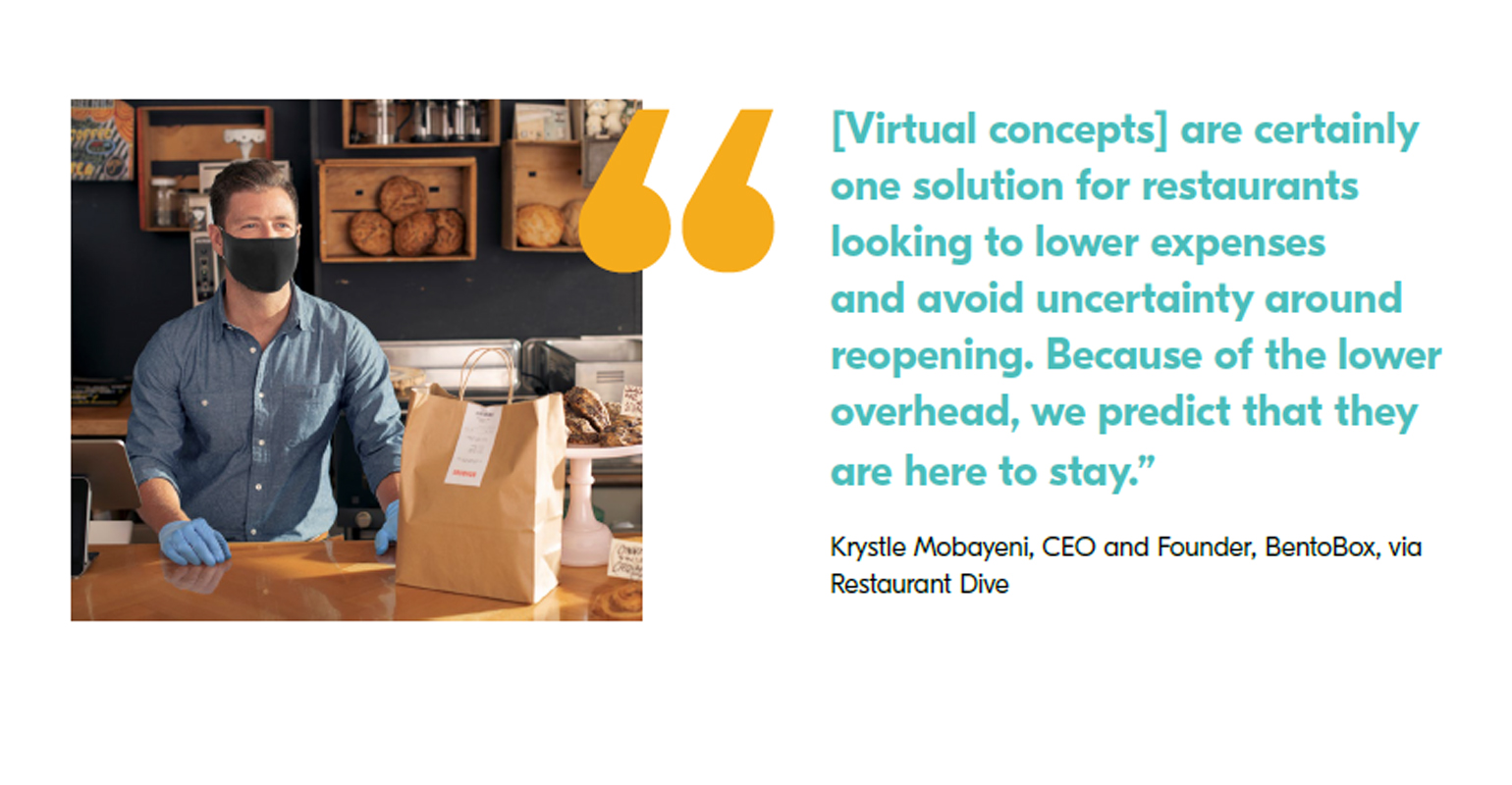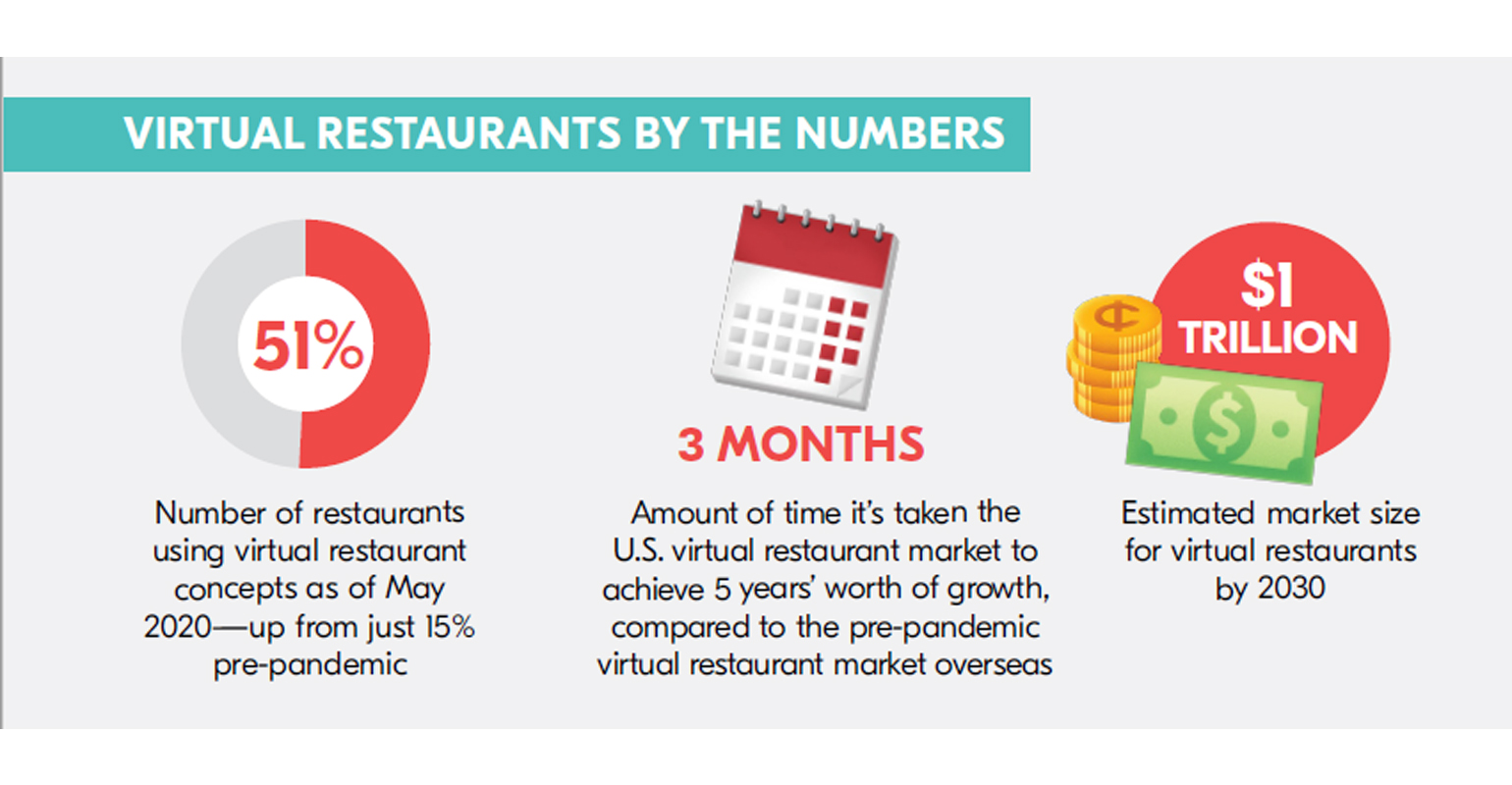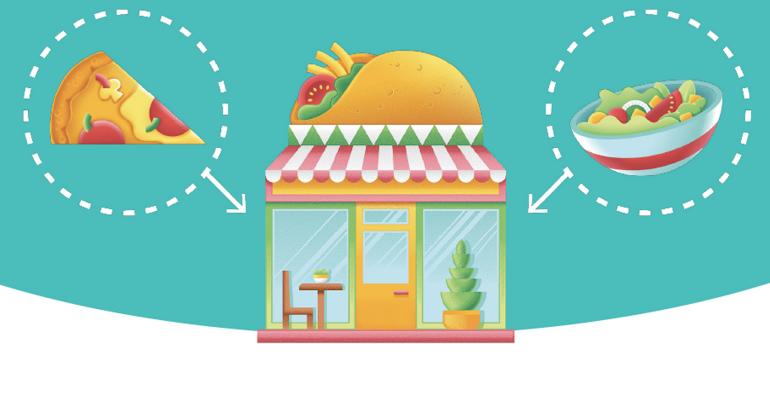Sponsored by Grubhub
What is a virtual restaurant?
Virtual restaurants are delivery-only restaurant concepts that operate out of an existing brick-and-mortar restaurant. They accept orders exclusively online through apps and websites like Grubhub. And they offer a quick, easy way to generate new orders and revenues, without increasing overhead costs.
How do virtual restaurants work?
Virtual restaurants typically share a kitchen with an existing brick-and-mortar restaurant to prepare and package orders. Customers order from a secondary menu that’s available exclusively online, exclusively for delivery. Those orders are prepared by the existing restaurant’s staff alongside orders for the primary business.
"Virtual restaurants and other] facilities that produce food for delivery only could create a $1 trillion opportunity for food delivery in the next decade.” Michael Shaefer, Global Food and Beverage Lead, Euromonitor, via Restaurant Business, July 2020
Virtual restaurants can take a variety of forms. Two of the most popular are:
Create your own virtual restaurant: Sometimes, restaurateurs create their own virtual restaurant to drive more business and reach more customers with new flavors and concepts.
- Example: Imagine a local gourmet burger restaurant, Anthony’s. Anthony, the owner and head chef, happens to have a passion for Korean-infused tacos. He decides to develop a virtual restaurant to sell those delicious tacos online under a different name (say “Krazi Kimchi Tacos”). Now, Anthony is running two restaurants—serving two sets of customers—using the same kitchen, ingredients, and staff.
Branded virtual restaurant: In other cases, virtual restaurants are partnerships, where an existing brick-and-mortar restaurant launches a pre-built, established virtual restaurant created by a third-party partner. The partner handles the menu, branding, packaging, and marketing, and more. The independent restaurateur handles cooking the food and fulfilling the orders with their existing kitchen and staff.
"I believe that five years from now a very large percentage of the independent restaurant community in this country will have a second brand that is not available to the people dining in their place and has no interrelationship to the building, except that they’re using the kitchen.”Robert Earl, Founder of Earl Enterprises and Virtual Dining Concepts and partner of Grubhub’s branded virtual restaurants portfolio
Why do virtual restaurants matter?
Virtual restaurants offer a way to bring new orders and revenue to your business—with minimal risk and without increasing overhead. By launching a virtual restaurant, you can:
- Tap into new incremental revenue streams: Virtual restaurants provide a way for brick-and-mortar restaurants to bring in new orders, customers, and delivery sales without having to open a new physical location. And they do it quickly. Typically, virtual restaurants can launch in about 1/4 the time of a physical restaurant concept, at a fraction of the cost.
- Reach new customers: By launching a brand-new concept from your existing space with a distinct menu and cuisine type, you can reach an entirely new set of customers, including customers who typically don’t order from your primary business.
- Grow your business without adding overhead: You can use the same staff, ingredients (for the most part), and kitchen to operate a virtual restaurant concept, so there’s little or no new overhead. Instead, you’re just maximizing the output of your kitchen and staff.

- Double your exposure on delivery sites like Grubhub: In other cases, virtual restaurants are partnerships, where an existing brick-and-mortar restaurant launches a pre-built, established virtual restaurant created by a third-party partner. The partner handles the menu, branding, packaging, and marketing, and more. The independent restaurateur handles cooking the food and fulfilling the orders with their existing kitchen and staff.

Source:
A pandemic surge in food delivery has made ghost kitchens and virtual eateries one of the only growth areas in the restaurant industry | The Gazette
How the pandemic accelerated the US ghost kitchen market '5 years in 3 months' | Restaurant Dive
2020 Trends: Expectations vs. reality | Restaurant Dive

